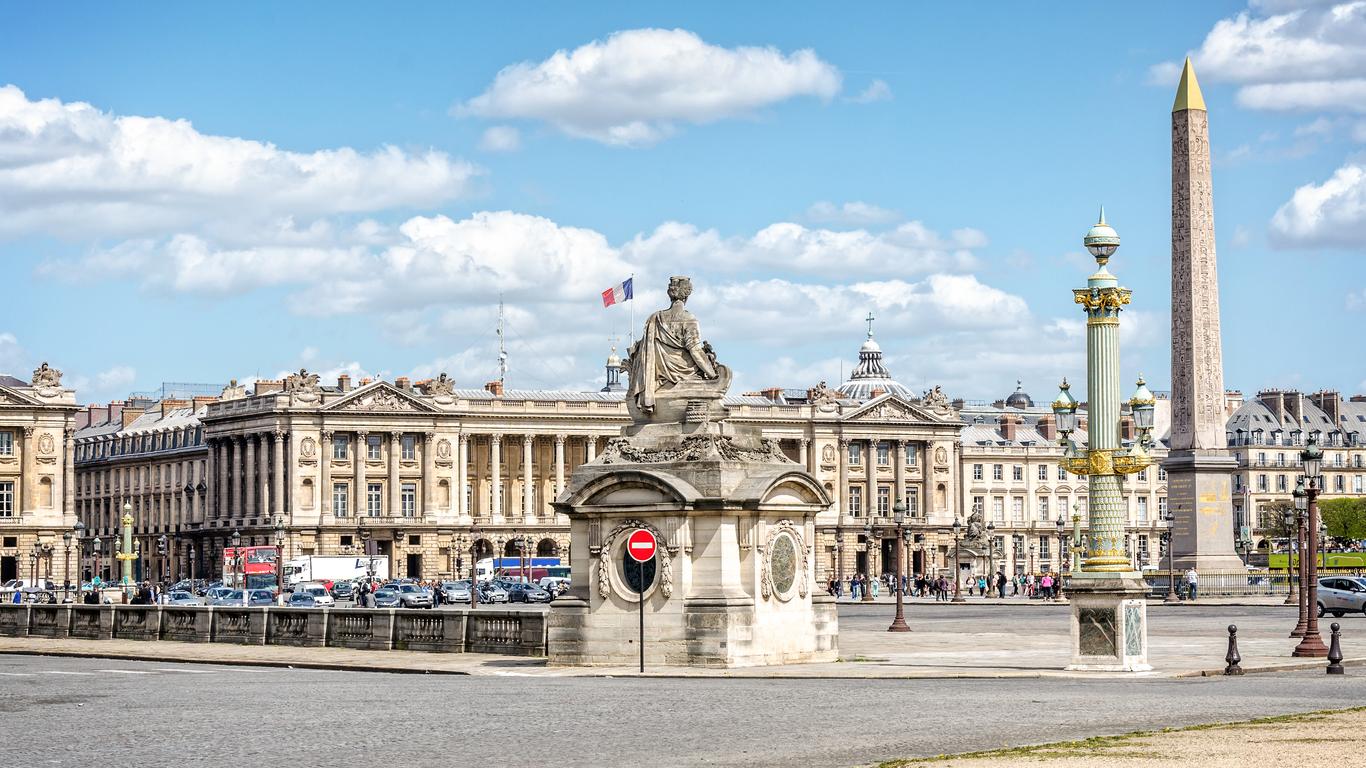Standing proudly in the 8th arrondissement of Paris is Place de la Concorde, the largest square in the city. With a rich history dating back to the French Revolution, beautiful ornamental fountains and striking architecture, it’s easy to see why this picturesque square attracts visitors from all over the world.
The centre of Place de la Concorde is dominated by a giant Egyptian obelisk which was once stationed at the entrance to the Temple of Luxor. The Obelisk of Luxor was a gift to France from the Egyptian government, etched with hieroglyphics on the reign of Ramesses II. There are two ornamental fountains located in the square constructed by architect Jacques Ignace Hittorf. The fountains symbolise rivers and seas due to their proximity to the Ministry of the Navy building and the River Seine. There are eight angles in the octagonal Place de la Concorde, each of which has a statue representing different French cities. A short walk away, visitors will find the beautiful Tuileries Gardens. Created by Catherine de Medici, the gardens are a wonderful place to soak up the Parisian atmosphere and watch the world go by. The public park is home to Musée de l'Orangerie which houses some of the best Impressionist paintings in the world. The most iconic work of art is a huge canvas of “Waterlilies” by Claude Monet. Louvre Museum is a 20 minutes’ walk from Place de la Concorde, and Pont Neuf bridge leading to Île de la Cité and the Notre Dame Cathedral a little further. The famous Parisian boulevard, Avenue de Champs-Élysées leads on from Place de la Concorde. Here, visitors will find the ultimate in retail therapy and French cuisine with world-class designer boutiques, chic cafes and fine dining establishments.
Paris is well-served by metro stations. The Concorde metro stop on the corner of Rue de Rivoli and Tuileries Gardens is the most convenient for Place de la Concorde. For visitors wishing to stroll through the park, Tuileries metro station is equally accessible. Many Parisian attractions are within walking distance from each other. Place de la Concorde to the Arc de Triomphe or the Eiffel Tower takes 30 minutes on foot.
During the French Revolution, a statue of Louis XV stood in the Place de la Revolution, and it was here amid raging crowds that Louis XVI was executed and the statue of his grandfather was torn down. Following the Bourbon Restoration in the early 1800s, the square was renamed Place de la Concorde, as a symbol of peace. The square with its beautiful fountains and grand architecture is one of Paris’ most symbolic sites.





